 Browns Archive
Browns Archive  11-Game Losing Streaks, 37 Years Apart
11-Game Losing Streaks, 37 Years Apart
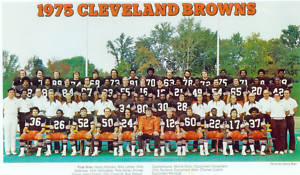 Once again, the Cleveland Browns are on the brink of history. And, as usual, not in the good way.
Once again, the Cleveland Browns are on the brink of history. And, as usual, not in the good way.
Last week they tied a charming team record with their 11th consecutive loss. One more and they enter uncharted territory, even for all the completely worthless Browns teams we’ve seen over the past 20 years.
Interestingly, the losing-streak record does not come from this expansion era, but from the mid-1970s, when the Browns faced the first of the 351 rebuilding processes that would follow up to the present day.
After dropping their final two games of a 4-10 campaign in 1974, they lost the first nine games of the 1975 schedule. This week, as in ’75, the Browns take their 11-game skid into a home game against a superior Cincinnati team.
Thirty-seven years ago, the winless Browns stunned the 8-1 Bengals to capture their first win. Not only did it stop the bleeding, but it catapulted the team into a nice, albeit brief, little stretch in team history, a sort of detente with misery.
Even once it’s snapped, you hear the term “11-game losing streak” and think of a franchise on the brink of complete collapse. And with good reason. But consider this: after the Browns snapped their first 11-game losing streak, they went on to win 17 of their next 26 games, going 9-5 and nearly making the playoffs just over a year after the losing streak hit double digits.
Could it happen again?
The best way to tackle that question is to compare the two teams at the moment their losing streaks hit 11. Obviously, we have the advantage of historical perspective when looking back to the 1970s, so we can more accurately assess the genuine strengths of the 1975 team, but for a fair analysis, we need to avoid that. So we can’t, for example, say Browns fans of 1975 could take comfort in that Brian Sipe was about to emerge as the team’s legendary starting quarterback. At the time, Sipe was an afterthought backup who couldn’t win the job outright despite ample opportunities.
So which team was worse off after 11 straight losses: 2012 or 1975? Or more importantly, is it at all possible that the current Browns have a shot at turning things around in the foreseeable future, just as the ’75 team did?
Let’s break down the comparisons into nine categories:
QUARTERBACK
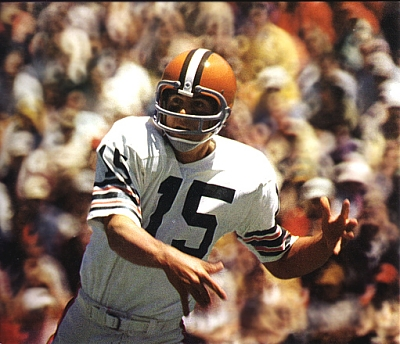 The 1975 season marked the last hurrah for Mike Phipps, who was in his sixth woeful NFL season - and yet still younger than
The 1975 season marked the last hurrah for Mike Phipps, who was in his sixth woeful NFL season - and yet still younger than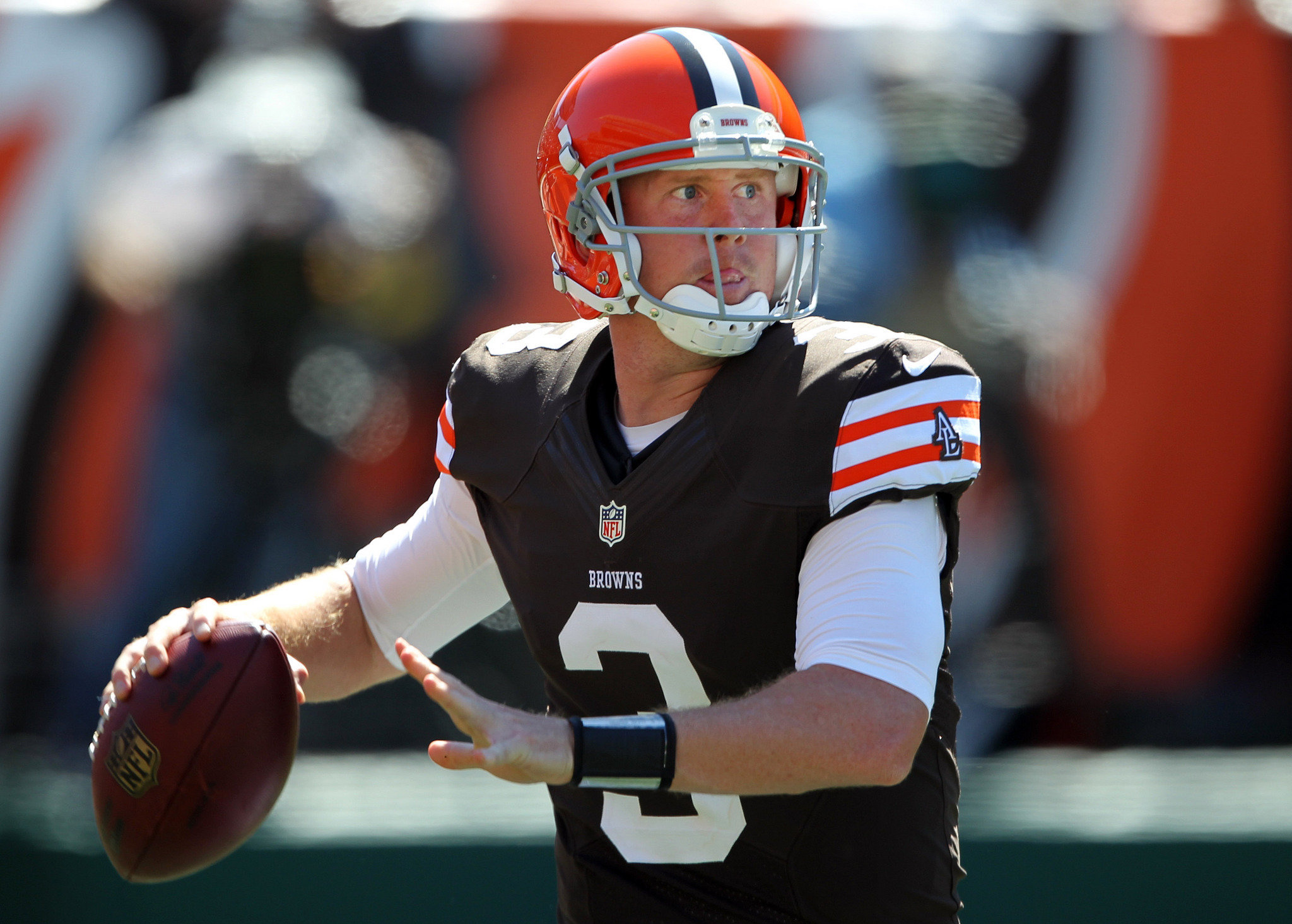 Brandon Weeden in his first. Phipps had been utterly terrible over his first five years and was no better in ’75, often alternating play between Sipe, at the time an unknown interloper from the taxi squad.
Brandon Weeden in his first. Phipps had been utterly terrible over his first five years and was no better in ’75, often alternating play between Sipe, at the time an unknown interloper from the taxi squad.
Much as current Browns fans may hate to hear it, Brandon Weeden of 2012, even as a rookie, is an improvement over Phipps of 1975. And presumably, even though the age is the same, Weeden is expected provide more over the next few years than anyone expected Phipps would provide the Browns.
IN BETTER SHAPE: 2012
RUNNING BACKS
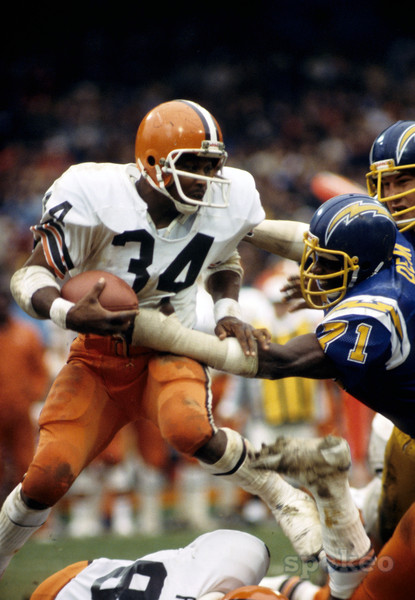 Both teams essentially had one playmaker on their respective rosters, and both were running backs. The modern Browns have
Both teams essentially had one playmaker on their respective rosters, and both were running backs. The modern Browns have 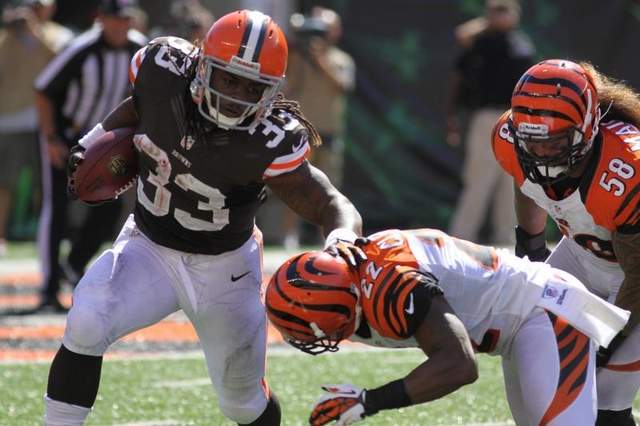 Trent Richardson, the 1975 Browns had third-year scatback Greg Pruitt. After that, essentially no other ball carrier to speak of for either team.
Trent Richardson, the 1975 Browns had third-year scatback Greg Pruitt. After that, essentially no other ball carrier to speak of for either team.
As the 1975 Browns floundered through their losing streak, Pruitt emerged not only as the best player on the team, but one of the best in the league, winding up rushing for over 1,000 yards in a 14-game season for a squad that had no other weapons. Richardson is on pace to have a decent year, and he’s only a rookie, but even in the depths of despair, Browns fans knew they had a once-in-a-generation talent in Pruitt.
IN BETTER SHAPE: 1975
RECEIVERS
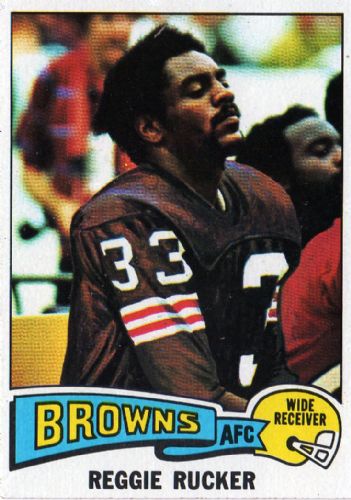 The current Browns have taken a beating for their lack of talent at wide receiver. And while their hits at this spot have been
The current Browns have taken a beating for their lack of talent at wide receiver. And while their hits at this spot have been 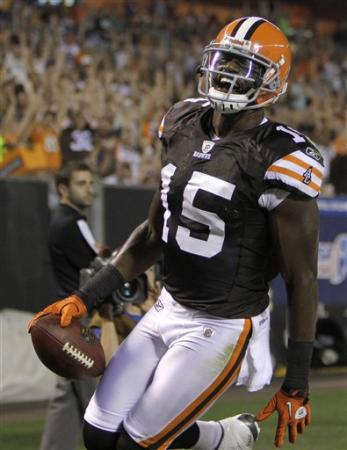 overwhelmed by their misses, they’ve managed to amass at least a near-average cadre of pass catchers.
overwhelmed by their misses, they’ve managed to amass at least a near-average cadre of pass catchers.
In 1975, the Browns scored one of the best trades in team history, snatching Reggie Rucker in a trade with New England, and he paid off right away with nearly 800 yards in his first season in Cleveland. But after Rucker, the dropoff was incredible. Greg Little may not be at Rucker’s level, but the other Browns’ wideouts are certainly an upgrade over the cast of invisibles in 1975 that included Steve Holden, tight end Oscar Roan, and a bunch of guys nobody had heard of, even at the time.
IN BETTER SHAPE: 2012
OFFENSIVE LINE
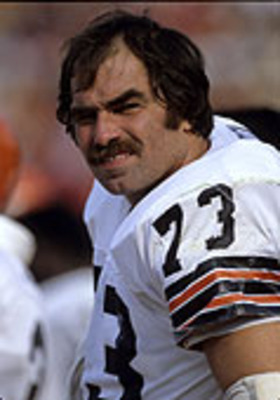 The names up front in 1975 were and are still well known. Dieken, DeLeone, and Robert Jackson, with dependable guys like John
The names up front in 1975 were and are still well known. Dieken, DeLeone, and Robert Jackson, with dependable guys like John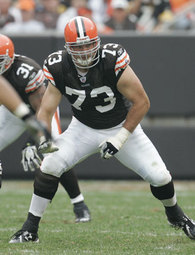 Demarie, Gerry Sullivan, and Bob McKay rotating in. Even without knowing that the offensive line would wind up becoming the strength of the team by decade’s end, you’d have to give them a slight edge over this year’s highly average unit. Joe Thomas and Alex Mack mirror Dieken and DeLeone fairly well, but the descent from that point is notable.
Demarie, Gerry Sullivan, and Bob McKay rotating in. Even without knowing that the offensive line would wind up becoming the strength of the team by decade’s end, you’d have to give them a slight edge over this year’s highly average unit. Joe Thomas and Alex Mack mirror Dieken and DeLeone fairly well, but the descent from that point is notable.
IN BETTER SHAPE: 1975
DEFENSIVE LINE
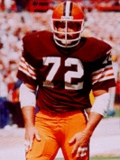 Sadly, there’s no contest here. The ’75 Browns actually did quite well against the run, ranking third in the NFL - and this was still a couple
Sadly, there’s no contest here. The ’75 Browns actually did quite well against the run, ranking third in the NFL - and this was still a couple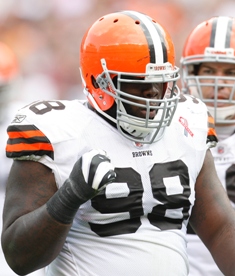 of years before the liberalized coverage rules opened up the passing game. Jerry Sherk was in his prime, venerable Walter Johnson was still in the mix as his career wound down, and rookie Mack Mitchell - the team’s top draft pick - showed promise. Even if you expect Phil Taylor to come back strong from his injury, the current d-line can’t hold a candle to that one.
of years before the liberalized coverage rules opened up the passing game. Jerry Sherk was in his prime, venerable Walter Johnson was still in the mix as his career wound down, and rookie Mack Mitchell - the team’s top draft pick - showed promise. Even if you expect Phil Taylor to come back strong from his injury, the current d-line can’t hold a candle to that one.
IN BETTER SHAPE: 1975
LINEBACKERS
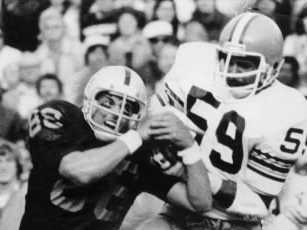 By sheer volume alone, you’d expect the 2012 Browns to have a leg up. D’Qwell Jackson has turned into a nice player - maybe the bes
By sheer volume alone, you’d expect the 2012 Browns to have a leg up. D’Qwell Jackson has turned into a nice player - maybe the bes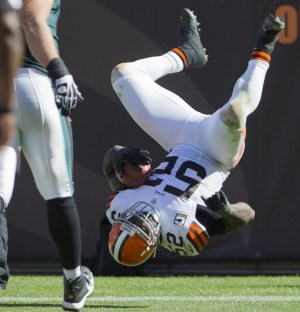 t on either team - but the ’75 Browns had an established veterans in Charlie Hall and Bob Babich and a baby-faced rookie in Dick Ambrose who made more of an impact than any of the Browns’ current youngsters. It’s a close call, but again, the ’75 Browns come out on top.
t on either team - but the ’75 Browns had an established veterans in Charlie Hall and Bob Babich and a baby-faced rookie in Dick Ambrose who made more of an impact than any of the Browns’ current youngsters. It’s a close call, but again, the ’75 Browns come out on top.
IN BETTER SHAPE: 1975
SECONDARY
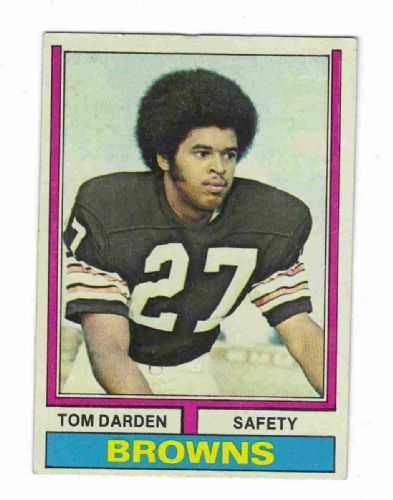 With budding star safety Thom Darden out all year with an injury, the Browns’ ’75 secondary was almost completely non-existent, picking
With budding star safety Thom Darden out all year with an injury, the Browns’ ’75 secondary was almost completely non-existent, picking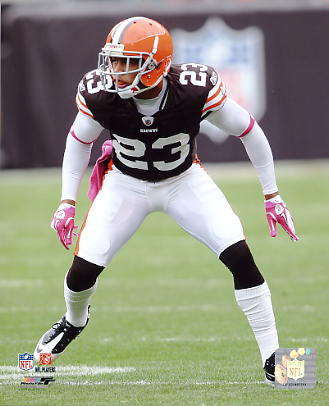 off only seven passes as a unit all season. With Darden out, Clarence Scott was the sole bona fide, and as a result, only three teams allowed more passing yards than the Browns.
off only seven passes as a unit all season. With Darden out, Clarence Scott was the sole bona fide, and as a result, only three teams allowed more passing yards than the Browns.
The modern Browns aren’t much different: Joe Haden and T.J. Ward are your anchors, with a handful of players who qualify as average at best. But knowing that Darden would return - and that he already had made more of an impact than Ward has - and that Scott and Haden are very comparable, you’d have to give the advantage to the 1975 Browns.
IN BETTER SHAPE: 1975
SPECIAL TEAMS
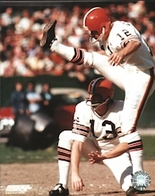 The return game was much less of a factor in the 1970s than it has evolved into today, and even with dazzling Greg Pruitt returning punts
The return game was much less of a factor in the 1970s than it has evolved into today, and even with dazzling Greg Pruitt returning punts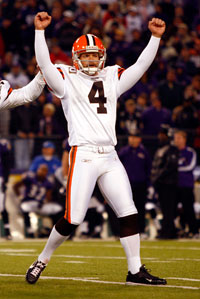 and kickoffs, the Browns’ special teams made little impact back then. By contrast, Josh Cribbs is on pace to have one of the best seasons of his career. Don Cockroft was still in his prime as one of the game’s most dependable kickers, but Phil Dawson has put himself on another, incomparable level. Also handling the punting duties, Cockroft was equally consistent, but no better than Reggie Hodges.
and kickoffs, the Browns’ special teams made little impact back then. By contrast, Josh Cribbs is on pace to have one of the best seasons of his career. Don Cockroft was still in his prime as one of the game’s most dependable kickers, but Phil Dawson has put himself on another, incomparable level. Also handling the punting duties, Cockroft was equally consistent, but no better than Reggie Hodges.
IN BETTER SHAPE: 2012
COACHING
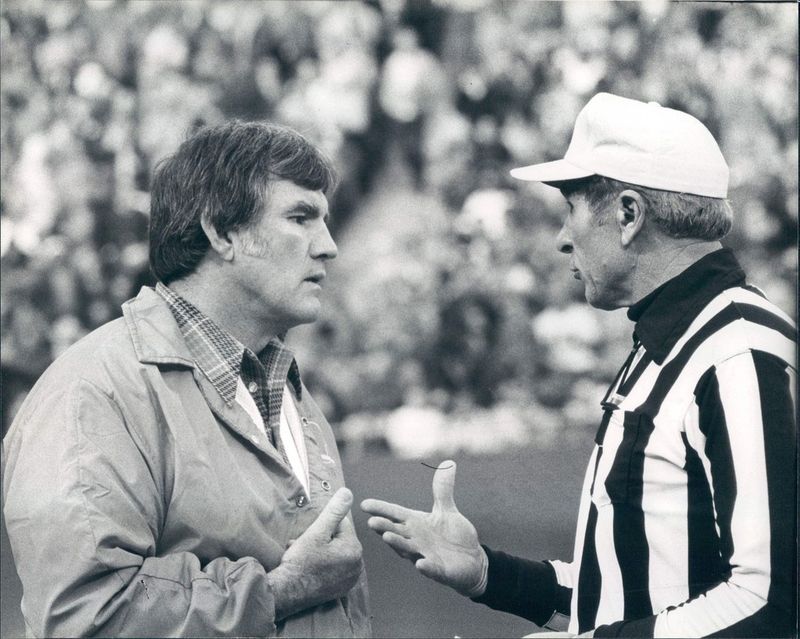 Forrest Gregg was in his first season in 1975, and it showed. Very little of his hard-core, disciplined philosophy had spilled onto the field,
Forrest Gregg was in his first season in 1975, and it showed. Very little of his hard-core, disciplined philosophy had spilled onto the field, 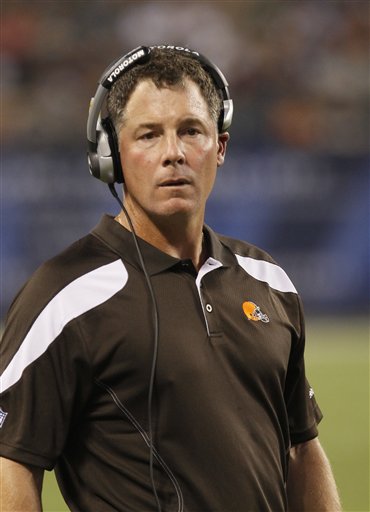 and the Browns were actually worse than they’d been before he got there. Ditto for Pat Shurmur, whose second year still feels like his first. Ironically, both men appeared to get the job before they were ready (Gregg had only been an assistant coach for three years), but Shurmur has the advantage of having two former NFL head coaches as his coordinators. It’s the equivalent of a bang-bang play at first, but give the current Browns the nod.
and the Browns were actually worse than they’d been before he got there. Ditto for Pat Shurmur, whose second year still feels like his first. Ironically, both men appeared to get the job before they were ready (Gregg had only been an assistant coach for three years), but Shurmur has the advantage of having two former NFL head coaches as his coordinators. It’s the equivalent of a bang-bang play at first, but give the current Browns the nod.
IN BETTER SHAPE: 2012
Tally it up and the 1975 Browns were in better shape in five of the nine categories. But it’s not a clearcut advantage, particularly when you consider three other key factors:
1. The average margin of defeat during the 1974-75 losing streak was 17.8 points per game. The 2011-12 average margin of defeat is 7.3. Part of that is due to the increased parity in the modern NFL, which leads us to factor No. 2.
2. The parity of the modern NFL did not exist in 1975. There was no free agency, and the only way for a team to get better was through patient, careful drafting and maybe a successful trade or two. So when a team hit rock bottom as the Browns did in the mid-1970s, there was no sense that a couple of free agents and a hot No. 1 draft pick could get you to the playoffs a year later.
3. In 1975, the Browns plummeting to the depths of the league was like something out of the Book of Revelations. Prior to 1974, the Browns had only posted one losing record in 28 years. So to watch them lose 11 straight games rattled the core of Cleveland sports fans. Today, the Browns losing 11 straight isn’t as big a deal and - sadly - we just accept it as business as usual. We may be more jaded and cynical, but we’re paying attention. The average attendance for a Browns home game in 1975 was less than 56,000. This year, it’s over 69,000. Football was king in the American sporting landscape in both eras and the economy was lousy in both eras. It’s the tolerance for losing that’s significantly higher.
By losing Sunday - 12 for ’12, if you will - the Browns can put themselves in a new tax bracket of suffering, one for which there are no previous comparisons in team history.
On the other hand, maybe it’s the ability for one team to be able to compare 11-game losing streaks that’s incomparable.
- NBA Announces 2013-2014 Schedule
- Browns Ink Sharknado
- Sharknado A No-Show For Rookie Camp
- Trent Richardson Out Until Training Camp
- Browns Sign Brandon Jackson
- Carrasco Suspended Eight Games
- Browns Add to Wide Receiver Depth with David Nelson
- Browns Need to Learn from Past Draft Mistakes
- Browns Release Chris Gocong and Usama Young
- Browns Missing on Grimes Disappointing, But Not The End
The TCF Forums
- Official- Browns Coach Search/Rumors
HoodooMan (Tuesday, January 21 2014 1:32 PM) - Movies coming out
rebelwithoutaclue (Tuesday, January 21 2014 12:56 PM) - 2015 Recruiting
jclvd_23 (Tuesday, January 21 2014 12:38 PM) - The 2014 Offseason Thread
Larvell Blanks (Tuesday, January 21 2014 12:25 PM) - Chris Grant's first 3 drafts
Kingpin74 (Tuesday, January 21 2014 10:13 AM) - Mike Brown
YahooFanChicago (Monday, January 20 2014 11:15 PM) - 2014 Hoops Hockey Hijinx
jpd1224 (Monday, January 20 2014 4:44 PM) - 2014 Recruiting
jclvd_23 (Monday, January 20 2014 2:26 PM) - Wish List - #4 Pick
Hikohadon (Monday, January 20 2014 1:26 PM) - #1 overall pick Anthony Bennett
TouchEmAllTime (Sunday, January 19 2014 1:28 PM)


